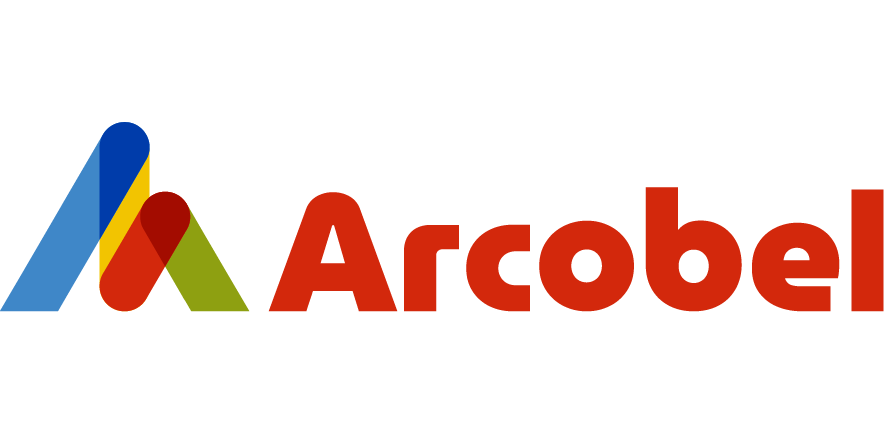-
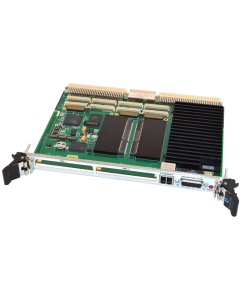 6U VME Intel 2002E 1.50GHz CPU board 8GB RAM P0 connector
6U VME Intel 2002E 1.50GHz CPU board 8GB RAM P0 connector- Processor: Celeron
- Max memory: 8GB
- Storage temperature: -55 to 85°C
SKU: XVME-6700-7080-LF
Price on request -
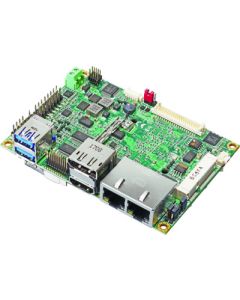 Pico-ITX MB Celeron dual-core N3350 DP & heat spreader
Pico-ITX MB Celeron dual-core N3350 DP & heat spreader- Processor: Intel Core, Intel Xeon, Intel Atom
- Max memory: 8GB
- Storage temperature: -20°C~ 80°C
SKU: LP-177PN3S
Price on request -
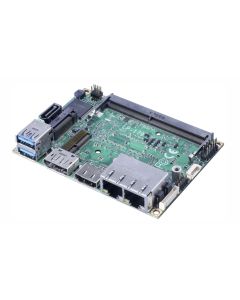 Pico-ITX Miniboard, Celeron 6305E + Cooler fan
Pico-ITX Miniboard, Celeron 6305E + Cooler fan- Processor: Intel Celeron
- Max memory: 16GB
- Storage temperature: -20°C/+80°C
SKU: LP-179C
Price on request -
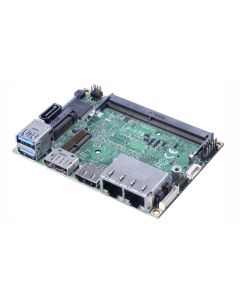 Pico-ITX Miniboard, i7-115G7E + Cooler fan
Pico-ITX Miniboard, i7-115G7E + Cooler fan- Processor: Intel Core
- Max memory: 16GB
- Storage temperature: -20°C/+80°C
SKU: LP-1797
Price on request -
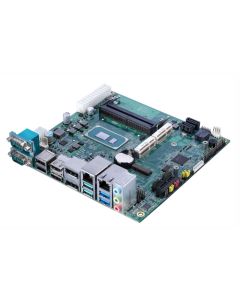 mini-ITX i7-1185G7E support HDMI LVDS DP 2.5Glan
mini-ITX i7-1185G7E support HDMI LVDS DP 2.5Glan- Processor: Intel Core
- Max memory: 64GB
- Storage temperature: -20°C/-80°C
SKU: LV-67127
Price on request -
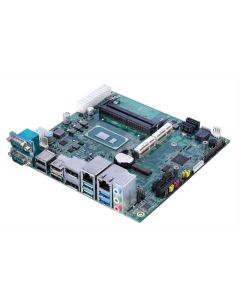 mini-ITX Celeron 6305E HDMI LVDS DP 2.5Glan
mini-ITX Celeron 6305E HDMI LVDS DP 2.5Glan- Processor: Intel Celeron
- Max memory: 64GB
- Storage temperature: -20°C/-80°C
SKU: LV-6712C
Price on request -
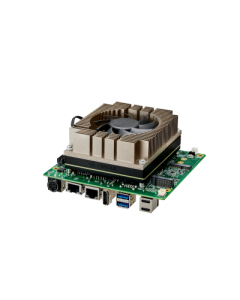 AGX ORIN 32GB, HDMI, 1 x GbE, 1 x 10GbE, -25°C ~ 80°C
AGX ORIN 32GB, HDMI, 1 x GbE, 1 x 10GbE, -25°C ~ 80°C- Processor: NVIDIA Jetson
- Max memory: 32GB
- Storage temperature: -40°C /85°C
SKU: AIB-MX13-1-A1
Price on request -
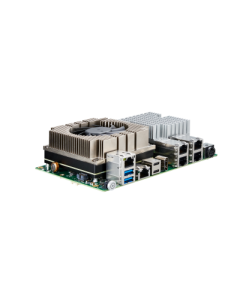 AGX ORIN 64GB, HDMI, 1 x GbE, 1 x 10GbE, 4 x PoE, -25°C ~ 80
AGX ORIN 64GB, HDMI, 1 x GbE, 1 x 10GbE, 4 x PoE, -25°C ~ 80- Processor: NVIDIA Jetson
- Max memory: 64GB
- Storage temperature: -40°C ~ +85°C
SKU: AIB-MX22-1-A1
Price on request -
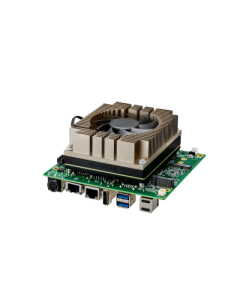 AGX ORIN 64GB, HDMI, 1 x GbE, 1 x 10GbE, -25°C ~ 80°C
AGX ORIN 64GB, HDMI, 1 x GbE, 1 x 10GbE, -25°C ~ 80°C- Processor: NVIDIA Jetson
- Max memory: 64GB
- Storage temperature: -40°C /85°C
SKU: AIB-MX23-1-A1
Price on request -
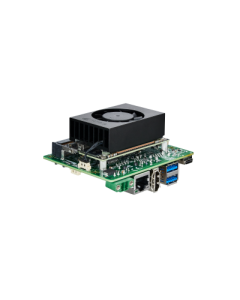 ORIN NX 8GB, HDMI, 1 x GbE, 2 x USB, 128GB SSD, -25°C ~ 80°C
ORIN NX 8GB, HDMI, 1 x GbE, 2 x USB, 128GB SSD, -25°C ~ 80°C- Processor: NVIDIA Jetson
- Max memory: 8GB
- Storage temperature: -40°C/85°C
SKU: AIB-SN31-1-A1
Price on request -
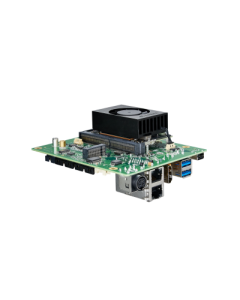 ORIN NX 8GB, HDMI, 2 x GbE, 2 x USB, 128GB SSD, -25°C ~ 80°C
ORIN NX 8GB, HDMI, 2 x GbE, 2 x USB, 128GB SSD, -25°C ~ 80°C- Processor: NVIDIA Jetson
- Max memory: 8GB
- Storage temperature: -40°C/+85°C
SKU: AIB-MN32-1-A1
Price on request -
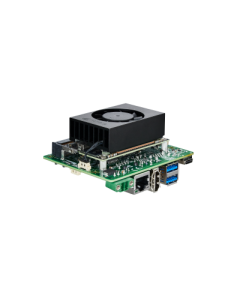 ORIN NX 16GB, HDMI, 1 x GbE, 2 x USB, 128GB SSD, -25°C ~ 80°
ORIN NX 16GB, HDMI, 1 x GbE, 2 x USB, 128GB SSD, -25°C ~ 80°- Processor: NVIDIA Jetson
- Max memory: 16GB
- Storage temperature: -40°C/85°C
SKU: AIB-SN41-1-A1
Price on request
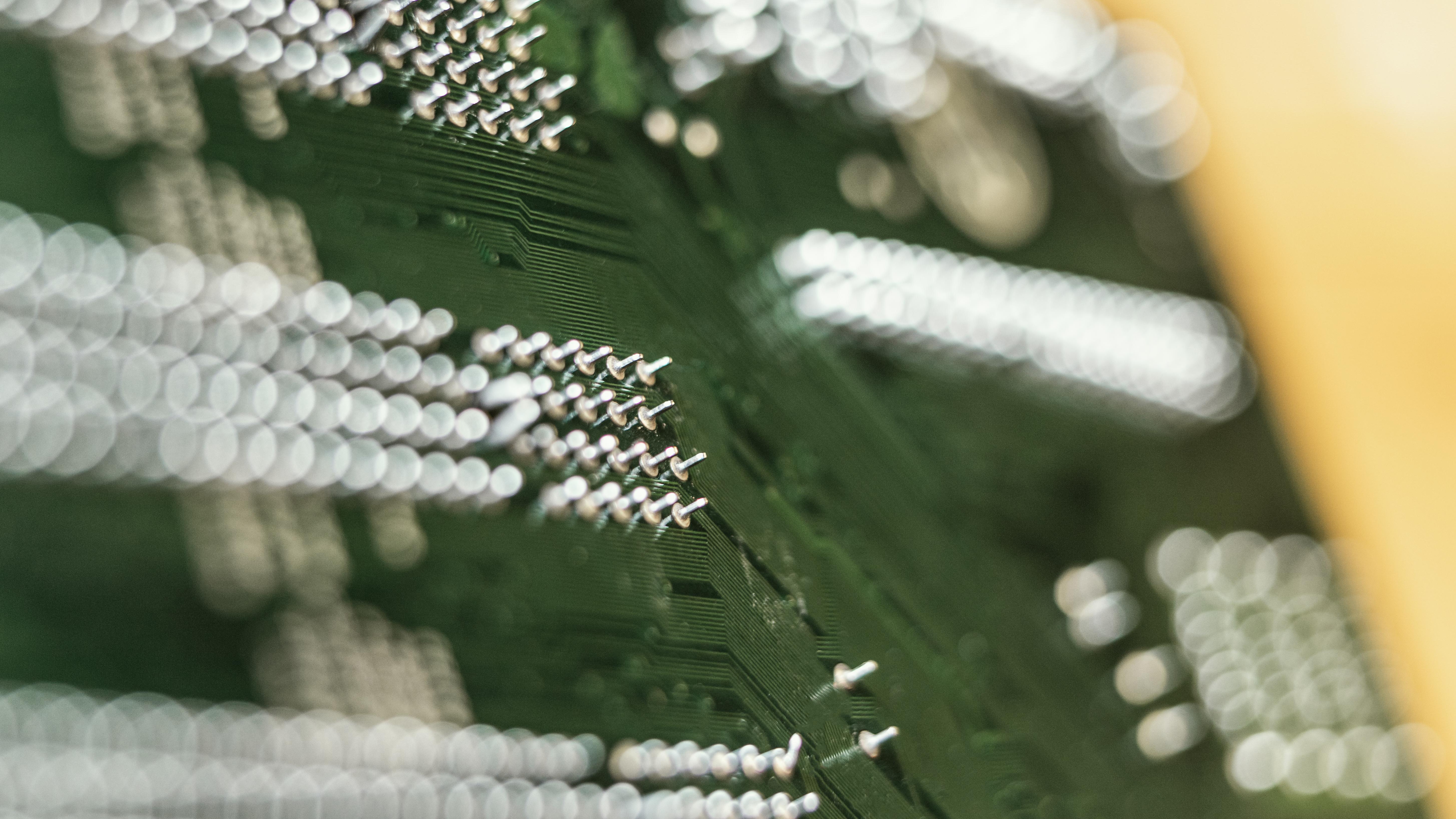
Industry 4.0 transforms infrastructure requirements. As a result, there is a greater demand for compact embedded board solutions. Arcobel supplies compact embedded motherboards and computer-on modules, enabling the development of very compact end products.
These board solutions are equipped with various I/O and flexible adjustment options as standard. This way the time-to-market of your end product can be minimized. At Arcobel.com you will find computer-on modules (COMs) and embedded motherboards in various form factors. These board solutions optimize Edge AI, HMI and IoT system development and enable the development of differentiated products for different target markets.
As the embedded computing options continue to upgrade, choosing the right embedded motherboard becomes more complicated and confusing. With our product knowledge and appropriate experience in different markets, we are able to put together a solution that meets your requirements.
Arcobel supplies board solutions for all relevant current form factors. For example, on Arcobel.com you will find Mini ITX, Pico ITX, COM Express, Qseven, SMARC and SOM form factors. We deliver embedded boards that have been developed to be able to operate 24/7 in the most critical circumstances. Here you will find COMs and embedded motherboards from a select number of industry distinguishing manufacturers. These embedded boards have been extensively tested and are extremely reliable.
`
These boards are compatible with ATX and microATX chassis and can be integrated without any problems, without having to adjust the I/O shield again. The four mounting holes in a Mini-ITX card correspond to four of the mounting holes on an ATX motherboard.
Embedded Mini-ITX motherboards are highly functional and offer users solid performance and low power consumption (> 100 watts). With a height of just 25 mm, a Mini-ITX motherboard is ideal for applications where system size and energy efficiency are important factors.
Embedded Mini-ITX cards are often used in industrial automation, self-service kiosks and other infotainment-driven solutions.
The Pico-ITX board is a small x86 embedded motherboard of 100 mm x 72 mm. This makes these embedded boards up to 75% smaller than a Mini-ITX embedded board. A Pico-ITX board contains, processor, cache, main memory and a variety of standard PC I/O interfaces.
Compact embedded computers based on Pico-ITX can perform tasks reliably and can process connectivity. Standardization makes high volumes possible for a wide range of industrial applications. High functionality combined with a small footprint of only 70 x 102 mm make these Pico-ITX embedded motherboards very versatile.
The Pico-ITX form factor enables the development of very small and light equipment. This technology offers the possibility to deliver more powerful and improved compact designs in the areas of infotainment, digital signage, telephony, security and the automotive market.
COMS are built on a single PCB. The design is based on the CPU, the RAM and input/output controllers. In most cases, however, these modules do not have I/O connectors. A COM is therefore usually confirmed on a carrier board. The buses from the COM are routed via the carrier board to standard I/O connectors.
COMs are extremely suitable for applications where a compact energy-efficient embedded computer solution is required. These modules are in fact very compact, easy to integrate and often have a multi-core CPU. There are also COMs with FPGA components. By adding FPGA IP cores to a COM, the I/O functions can be adjusted without having to adjust the PCB.
Some COM formats are equipped with MXM edge connectors, while others COMs have high density board-to-board connectors.
Hardware and software can be developed simultaneously. As a result, the time to market (TTM) can considerably be reduced. Significant design costs are also saved. Another advantage of this scalability is that it extends the availability of applications in the long term. After all, after every product life cycle there is another successor available that can be used as a retrofit.
There are three open-spec COM standards that are often used for industrial applications, namely: COM Express¸ SMARC and Qseven.
Arcobel supplies Computer-on-Modules of all relevant contemporary form factors. We deliver COMs that have been developed to operate 24/7 in the most critical environments.
The form factor uses a mezzanine-based design. All COM modules are plugged into an application-specific baseboard. These modules can therefore easily be replaced by a new, backwards-compatible COM module where necessary.
The COM Express standard was released by the PICMG in 2005. Various COM Express types have been developed over the years. Each type is based on a different pinout configuration and is provided with one or two 220-pin connectors. A total of 8 different pinouts have now been released. Every pinout type is suitable for a specific application. Type 1, 2, 3, 4, 5 have since been removed after COM Express revision 3.0. It is therefore highly recommended to use pinout type 6.7 or 10 for new designs. Nowadays pinout type 6 and pinout type 10 are generally used the most.
Type 6 and 10 COM Express modules feature PCI Express, USB 3.0, DDI (DisplayPort / HDMI / DVI) and eDP interfaces, enabling the development of products for completely new applications. The PEG lines on a COM Express Type 6 module enable the integration of a graphic card or FPGA.
What makes SMARC 2.0 unique is the integrated support for wireless technology. To perform this task, SMARC 2.0 modules have a special area on the module where RF connectors are placed. To ensure consistent data exchange, all SMARC 2.0 designs are equipped with these integrated RF connectors.
SMARC 2.0 modules also have two configurable Gigabit Ethernet ports as standard. This allows these modules to be connected effortlessly with two independent local Ethernet connections. With Precision Time Protocol (PTP), the highest possible synchronization between multiple local devices can be achieved. These functions combined with WLAN functionality make SMARC 2.0 modules extremely suitable for integration in powerful IoT Gateways.
More and more applications require the ability to use live images for analysis. Modern industrial PCs, for example, have to be increasingly connected to cameras. SMARC 2.0 modules have 2 MIPI CSI interfaces as standard, so that cameras can easily be integrated on the carrier board.
Qseven modules are connected to an application-specific carrier board via an MXM connector. Features such as audio codecs, touch controllers and wireless devices, combined with the desired Qseven module, create a scalable, fast-time-to-market solution. Qseven modules offer users many connectivity options. These modules have multiple display connections, Gigabit Ethernet, USB 3.0, USB 2.0 and serial communication. Additionally, these modules can be expanded with a maximum of two MIPI CSI cameras using the flat foil connector.
A Qseven module is equipped with a male MXM connector. MXM connectors continue to function optimally in the most challenging environmental conditions, even if the Qseven board comes into contact with temperature changes, shocks and vibrations. This makes it an ideal small form factor solution for industrial applications. For industrial applications, legacy interfaces such as serial ports and PS2 are integrated on the carrier board.
SOMs have been developed in response to the rapidly increasing demand for compact, powerful embedded systems. Because the intelligence of the final application has already been developed, the time-to-market of the end product is shortened. The implementation risk is also a lot lower, because they are fully developed and tested solutions. For example, a designer does not have to worry about the countless aspects that play a role in a CPU design, such as: setup/multiplexing, power supply (power up/power down sequencing) and memory design (DDR3/DDR4).
The modules are developed based on components with an embedded roadmap, so that a long delivery time can be guaranteed. Another advantage is that everything is configurable. System-on-Modules use open source hardware and open source software.
In collaboration with our suppliers, our engineers can develop a fully customer-specific carrier board, implemented with I/O and expansion options focused on the application in question.
We are happy to talk to you to discuss further options.
These board solutions are equipped with various I/O and flexible adjustment options as standard. This way the time-to-market of your end product can be minimized. At Arcobel.com you will find computer-on modules (COMs) and embedded motherboards in various form factors. These board solutions optimize Edge AI, HMI and IoT system development and enable the development of differentiated products for different target markets.
As the embedded computing options continue to upgrade, choosing the right embedded motherboard becomes more complicated and confusing. With our product knowledge and appropriate experience in different markets, we are able to put together a solution that meets your requirements.
Arcobel supplies board solutions for all relevant current form factors. For example, on Arcobel.com you will find Mini ITX, Pico ITX, COM Express, Qseven, SMARC and SOM form factors. We deliver embedded boards that have been developed to be able to operate 24/7 in the most critical circumstances. Here you will find COMs and embedded motherboards from a select number of industry distinguishing manufacturers. These embedded boards have been extensively tested and are extremely reliable.
Embedded Motherboards
Arcobel supplies a wide range of long-term embedded motherboards, ranging from Pico-ITX to full size ATX motherboards. The variety of low power and server embedded motherboards offer a solution for various applications. These motherboards are based on the latest embedded processors and chipsets. With an embedded roadmap, these motherboards are available for many years.ATX
Thanks to the reliable and durable PCBA, Printed Circuit Board Assemblies, ATX motherboards offer an optimal platform for embedded systems in industrial automation. ATX motherboards provide operators with multiple PCIe/PCI/LAN/USB3.0 connection options. Embedded systems equipped with an ATX embedded motherboard combine performance with a variety of expansion options. Such systems can therefore be used simultaneously for several tasks. Our ATX embedded motherboards are used for video editing, motion control and data acquisition systems, among other things.`
Mini ITX
Trends in the industry indicate that users need a smaller and cheaper solution for their embedded system requirements. Mini-ITX is a compact motherboard form factor. The compact form factor (17 × 17 cm) makes integration into compact embedded computers possible.These boards are compatible with ATX and microATX chassis and can be integrated without any problems, without having to adjust the I/O shield again. The four mounting holes in a Mini-ITX card correspond to four of the mounting holes on an ATX motherboard.
Embedded Mini-ITX motherboards are highly functional and offer users solid performance and low power consumption (> 100 watts). With a height of just 25 mm, a Mini-ITX motherboard is ideal for applications where system size and energy efficiency are important factors.
Embedded Mini-ITX cards are often used in industrial automation, self-service kiosks and other infotainment-driven solutions.
Pico-ITX Boards
Compact and complete, the Pico-ITX embedded motherboards are suitable for many purposes. With the arrival of Industry 4.0, the infrastructure of automation companies has changed considerably. As a result, there is an increasing demand for compact industrial computers, in the form of IoT gateways.The Pico-ITX board is a small x86 embedded motherboard of 100 mm x 72 mm. This makes these embedded boards up to 75% smaller than a Mini-ITX embedded board. A Pico-ITX board contains, processor, cache, main memory and a variety of standard PC I/O interfaces.
Compact embedded computers based on Pico-ITX can perform tasks reliably and can process connectivity. Standardization makes high volumes possible for a wide range of industrial applications. High functionality combined with a small footprint of only 70 x 102 mm make these Pico-ITX embedded motherboards very versatile.
The Pico-ITX form factor enables the development of very small and light equipment. This technology offers the possibility to deliver more powerful and improved compact designs in the areas of infotainment, digital signage, telephony, security and the automotive market.
3,5"SBC
3.5" Embedded boards offer system developers a balance between a compact form factor and numerous I/O configuration options. This combined with high functionality and performance, makes this form factor suitable for the most diverse applications. You can think of: digital signage, HMI and embedded IoT.Computer-on-modules
A computer-on-module (COM) is a type of single-board computer (SBC). This component is a subtype of an embedded computer system. A COM is very similar to a system on module (SOM).COMS are built on a single PCB. The design is based on the CPU, the RAM and input/output controllers. In most cases, however, these modules do not have I/O connectors. A COM is therefore usually confirmed on a carrier board. The buses from the COM are routed via the carrier board to standard I/O connectors.
COMs are extremely suitable for applications where a compact energy-efficient embedded computer solution is required. These modules are in fact very compact, easy to integrate and often have a multi-core CPU. There are also COMs with FPGA components. By adding FPGA IP cores to a COM, the I/O functions can be adjusted without having to adjust the PCB.
Some COM formats are equipped with MXM edge connectors, while others COMs have high density board-to-board connectors.
Hardware and software can be developed simultaneously. As a result, the time to market (TTM) can considerably be reduced. Significant design costs are also saved. Another advantage of this scalability is that it extends the availability of applications in the long term. After all, after every product life cycle there is another successor available that can be used as a retrofit.
There are three open-spec COM standards that are often used for industrial applications, namely: COM Express¸ SMARC and Qseven.
Arcobel supplies Computer-on-Modules of all relevant contemporary form factors. We deliver COMs that have been developed to operate 24/7 in the most critical environments.
COM Express
COM Express is a very compact COM form factor. Every COM Express Module has an integrated CPU and memory functionality, I/O, graphics (PEG) and Ethernet. These modules are based on an Intel or AMD X86 instruction set.The form factor uses a mezzanine-based design. All COM modules are plugged into an application-specific baseboard. These modules can therefore easily be replaced by a new, backwards-compatible COM module where necessary.
The COM Express standard was released by the PICMG in 2005. Various COM Express types have been developed over the years. Each type is based on a different pinout configuration and is provided with one or two 220-pin connectors. A total of 8 different pinouts have now been released. Every pinout type is suitable for a specific application. Type 1, 2, 3, 4, 5 have since been removed after COM Express revision 3.0. It is therefore highly recommended to use pinout type 6.7 or 10 for new designs. Nowadays pinout type 6 and pinout type 10 are generally used the most.
Type 6 and 10 COM Express modules feature PCI Express, USB 3.0, DDI (DisplayPort / HDMI / DVI) and eDP interfaces, enabling the development of products for completely new applications. The PEG lines on a COM Express Type 6 module enable the integration of a graphic card or FPGA.
SMARC
The SMARC Computer-on-Module arose from the need for COMs with an energy-efficient ARM CPU. Intel also released energy-efficient SoCs with an X86 architecture for SMARC at a later stage. It is even possible to feed these modules with solar cells and/or batteriesWhat makes SMARC 2.0 unique is the integrated support for wireless technology. To perform this task, SMARC 2.0 modules have a special area on the module where RF connectors are placed. To ensure consistent data exchange, all SMARC 2.0 designs are equipped with these integrated RF connectors.
SMARC 2.0 modules also have two configurable Gigabit Ethernet ports as standard. This allows these modules to be connected effortlessly with two independent local Ethernet connections. With Precision Time Protocol (PTP), the highest possible synchronization between multiple local devices can be achieved. These functions combined with WLAN functionality make SMARC 2.0 modules extremely suitable for integration in powerful IoT Gateways.
More and more applications require the ability to use live images for analysis. Modern industrial PCs, for example, have to be increasingly connected to cameras. SMARC 2.0 modules have 2 MIPI CSI interfaces as standard, so that cameras can easily be integrated on the carrier board.
Qseven
Qseven is a Computer-on-Module executed in a very compact form factor. This module is even more compact than the smallest COM Express module. The standard was issued by the SGET in 2010. This module provides an answer to the demand for compact and cost-efficient modules with high-speed interfaces.Qseven modules are connected to an application-specific carrier board via an MXM connector. Features such as audio codecs, touch controllers and wireless devices, combined with the desired Qseven module, create a scalable, fast-time-to-market solution. Qseven modules offer users many connectivity options. These modules have multiple display connections, Gigabit Ethernet, USB 3.0, USB 2.0 and serial communication. Additionally, these modules can be expanded with a maximum of two MIPI CSI cameras using the flat foil connector.
A Qseven module is equipped with a male MXM connector. MXM connectors continue to function optimally in the most challenging environmental conditions, even if the Qseven board comes into contact with temperature changes, shocks and vibrations. This makes it an ideal small form factor solution for industrial applications. For industrial applications, legacy interfaces such as serial ports and PS2 are integrated on the carrier board.
SOM
CPU-SOMs combine a microprocessor, flash, RAM and power supply on one compact PCB. SOM stands for System on Module. A SOM is complete with all hardware and software requirements. This makes these board solutions ready for use. System-on-Modules are application-independent. Combined with an application specific carrier board, these modules offer a perfect platform for the development of various embedded products.SOMs have been developed in response to the rapidly increasing demand for compact, powerful embedded systems. Because the intelligence of the final application has already been developed, the time-to-market of the end product is shortened. The implementation risk is also a lot lower, because they are fully developed and tested solutions. For example, a designer does not have to worry about the countless aspects that play a role in a CPU design, such as: setup/multiplexing, power supply (power up/power down sequencing) and memory design (DDR3/DDR4).
The modules are developed based on components with an embedded roadmap, so that a long delivery time can be guaranteed. Another advantage is that everything is configurable. System-on-Modules use open source hardware and open source software.
Carrier Cards
A computer-on module is integrated into a system, together with an associated carrier board. The carrier board offers users the necessary interfaces to be able to develop a customer-specific solution in no time.In collaboration with our suppliers, our engineers can develop a fully customer-specific carrier board, implemented with I/O and expansion options focused on the application in question.
We are happy to talk to you to discuss further options.
